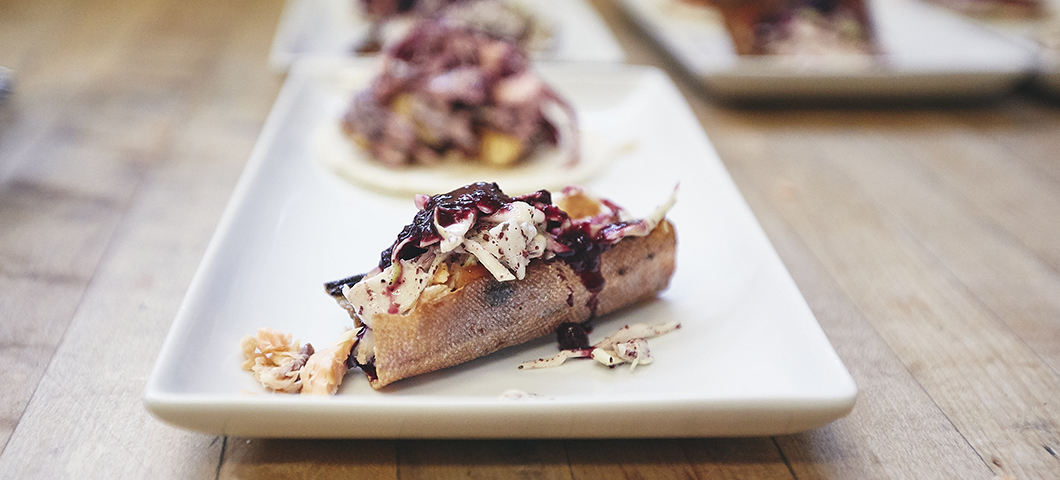Fish Skin Tacos
Servings: one fish filet makes 7 mini tacos; one filet skin wraps 3 mini tacos
|
Product1
|
Amount
|
Unit
|
|---|---|---|
Slaw |
|
|
|
green cabbage
|
1 1/2
|
cup
|
|
sour cream
|
3
|
Tbsp
|
|
sumac berry powder
|
1 1/2
|
Tbsp
|
|
cayenne powder
|
3/4
|
tsp
|
|
juniper berry powder
|
1
|
tsp
|
|
salt and pepper to taste
|
|
|
Berry Drizzle |
|
|
|
huckleberry syrup
|
1
|
cup
|
|
water
|
1/2
|
cup
|
|
honey
|
1/2
|
Tbsp
|
|
cayenne
|
1/8
|
tsp
|
Other Ingredients |
|
|
|
Native Fish Keepers, Inc. smoked lake trout filet, with skin
|
1
|
package/ |
|
2-3 additional skins from smoked fish filets, or 4 mini corn tortillas
|
|
|
1The MSU Food Product Development Lab does not endorse any ingredient suppliers, but for culinary and scientific specificity, we tested the recipe using the brand name products listed above.
Instructions:
- Heat the trout filet(s) in a 300°F oven for 10 minutes.
- Toss all the slaw ingredients in a mixing bowl.
- Combine the berry drizzle ingredients in a pan and cook on low heat, stirring continuously, about 10 minutes.
- Peel skin from filet(s), and cut each skin into 3 equal pieces, approximately the size of business cards.
- Lightly oil the skin pieces, fold them in half like taco shells, and broil until crispy, watching carefully to ensure they don’t burn.
- Cut and flake the skinned trout filet(s).
- Assemble tacos by placing the flaked fish in the broiled fish skins or warmed corn tortillas; top with slaw.
Acknowledgements
The smoked lake trout product and taco recipe were developed by Native Fish Keepers, Inc., Flathead Reservation community members who participated in the Montana State University NUTR 435 class, and other students in this class in 2019.

This research is based on work that is supported by the National Institute of Food and Agriculture, U.S. Department of Agriculture, under award number 2020-38640-31523-WS1RE through the Western Sustainable Agriculture Research and Education program under project number SW21-929. USDA is an equal opportunity employer and service provider. Any opinions, findings, conclusions, or recommendations expressed in this publication are those of the author(s) and do not necessarily reflect the view of the U.S. Department of Agriculture.


